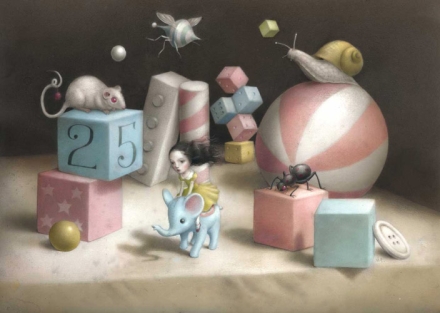ShootLDN is a professional photographic event established by Hasselblad UK in London after 5 years of success with Hasseblad USA in New York. This interactive, hands-on event is aimed at professional photographers but it also suitable for individuals of all levels of expertise. The event was free with a range of seminars by experts in the industry, live shoots and a Hasselblad Masters Exhibition.
This year it was based at the Old Truman Brewery on October 2-3rd. I wasn't sure whether to go at first as my own practice is Illustration but my housemate and boyfriend are both on Photography courses and showed me the seminar list for the Thursday and I felt some of them would be relevant and potentially helpful.
The first seminar I attended was by Steve Mcleod, the creative director from
Metro Imaging on building a professional portfolio. He advised that portfolio reviews are a great way to get feedback on your portfolio and to think carefully about what you want your work to say. He advised that editing down a professional portfolio is key as fewer images allow you time to discuss your images and the thoughts behind them and chance to fully engage with the person viewing your portfolio. He explained it is important to think about who you are pitching to and tailor your portfolio to best suit your audience; practice laying out the work, paying particular attention to the narrative and flow of the work you are presenting. Always end on a high, with one of your best images to end with something memorable that stands out.
He expressed the need to know your work and be able to talk about your images concise and clearly. A good website and portfolio won't sell you, it's important that you can explain what you do as well. This is something I really need to practice as I often understand my own work but find it hard to present my ideas clearly and concisely in group critiques and tutorials, so I plan to work at this in order to get the best advice and experience from my final year at university.
Metro Imaging
The next seminar was by Julia Boggio from
Boggio Studios on marketing and branding. She had some great dos and don'ts marketing, networking and advertising that I found really useful as it broke up her ideas into clear bite-size chunks.
She really stressed the importance of a business plan with yearly goals that allows us to focus on the most important goals and how to best achieve them.
The key to networking efficiently is to always have a pocket full of business cards to hand out and push yourself to be brief, focused and memorable. One of her tools to being memorable is to wear bright, striking clothing that allows people to easily remember her after the event. She had a really interesting story about her friend that used an iPod touch attached to her lapel to play a moving slideshow of her work to showcase her portfolio as she networked. The bad habits of networking were to go empty handed, overly sell yourself, focus on one person all night and to keep looking over your shoulder. The best networkers will move about the room to give them the chance to talk to more people and aim is make people aware of the work you do, not push to sell right there and then.
She said events are a great way to attract new clients so it is important to be presentable, make your stall look inviting and talk to people. It is a good idea to create promotion materials that you can use at these events but don't break the bank or oversell yourself again as these events are about generating interest and attracting people to what you do.
One question asked by the audience was 'how did you go from a sole photographer to a business?'. Her response was she wrote a business plan to give her aim for her targets and focus. It was key for her to then re-brand as she expanded to best suit her market and invest wisely in new employees and property. Her key advice was to 'be clear where you want to go' or you will get lost and go nowhere.
The last talk was by far the best from Mike Trow, the picture editor at Vogue. He has been the picture editor for Vogue for the best 8 years and he talked about the shoots he has been part of and arranged for Vogue during that time. He was the only seminar I didn't make any notes during as he captivated the audience with his quirky stories. I was interested to hear of a few shoots he had spent weeks arranging but just hadn't worked and never appeared in Vogue, and it was comforting to know that even the best people make mistakes. More about him and what he does can be read
here.
Overall it was a really informative and inspiring day and I will be checking the timetable next year. I have come away with some really useful tips that will help me as I establish myself in my final year at university and to help prepare myself for when I leave.

























